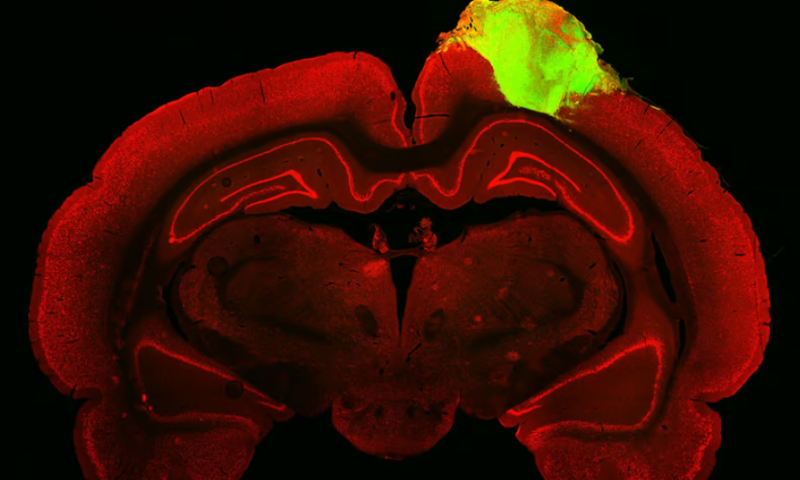Scientists have integrated human brain organoids into the brains of rats with injuries to their visual cortices and gotten the cells to respond to stimulation, according to a new study from researchers at the University of Pennsylvania. The findings are a step toward using stem-cell-derived brain tissue to restore some functions of sight.
“Neural tissues have the potential to rebuild areas of the injured brain,” H. Isaac Chen, M.D., a neurosurgeon and lead author of the study, said in a press release. “We haven’t worked everything out, but this is a very solid first step.”
In an article published Feb. 2 in Cell Stem Cell, the scientists described how they implanted human brain organoids—brain tissue grown in a petri dish from stem cells—into the visual regions of adult rats that had sustained cortical injuries. The implanted cells formed connections with the rats’ retinas and were activated in response to flashing lights and other stimuli.
This isn’t the first time researchers have developed human-rat brain hybrids. Back in October 2022, scientists at Stanford University announced they had successfully integrated human brain organoids into the sensory cortices of newborn rats. Six months later, the tissue had sprouted new neurons, developed blood vessels and established connections with other cells. That work had built on several decades of research on transplanting both rodent and human cells into the rodent brains.
While the Stanford study was a breakthrough for neuroscience research, the new one adds to a growing body of evidence that organoids could have clinical applications. Previous experiments have shown that fetal rodent stem cells implanted into adult animals can be integrated into the visual cortex. Last December, researchers at the University of San Diego announced they successfully transplanted human brain organoids into the same regions in mice, which formed connections and responded to stimuli. The new findings show that the same thing is possible in rats, bolstering the potential for taking a stem-cell-based strategy to reversing vision loss.
The Penn researchers grew their organoids using neurons derived from human stem cells, allowing them to mature for between 80 and 88 days before surgically transplanting them into injured areas in the visual centers of adult male rats’ brains. Three months later, the tissue was fully integrated, forming blood vessels and connections with native neurons just as they had in the Stanford experiment.
The researchers injected non-pathological viruses tagged with fluorescent compounds into the retinas of the mice, giving them a way to trace the connections between the human and rat cells. Then, while recording individual neuron activity with electrical probes, they exposed the animals to flashing lights and black and white bars.
The neurons activated in response to the stimuli, their patterns of activation changing along with the light. They also possessed orientation selectivity, meaning they responded differently to the stimuli depending on their shape or what direction they were pointing in. This showed that not only were the cells able to integrate into the visual system, but that they could take on specific functions.
The findings are limited by the age of the brain organoid tissue; at three months, “it is likely that the graft neurons we evaluated were not completely mature,” the researchers wrote in their paper. And, while the type of injury inflicted on the rats was vision-impairing, it doesn’t precisely mirror the damage that would be caused by a stroke or a traumatic brain injury.
“Nonetheless,” the researchers wrote, “this approach provided proof of principle that organoid grafts could integrate with the injured adult mammalian brain.”
Next, the researchers are looking to see how organoids might be used in areas beyond the visual cortex. Their goal is to understand exactly how organoids integrate with brain tissue and to find ways to speed up the process.

